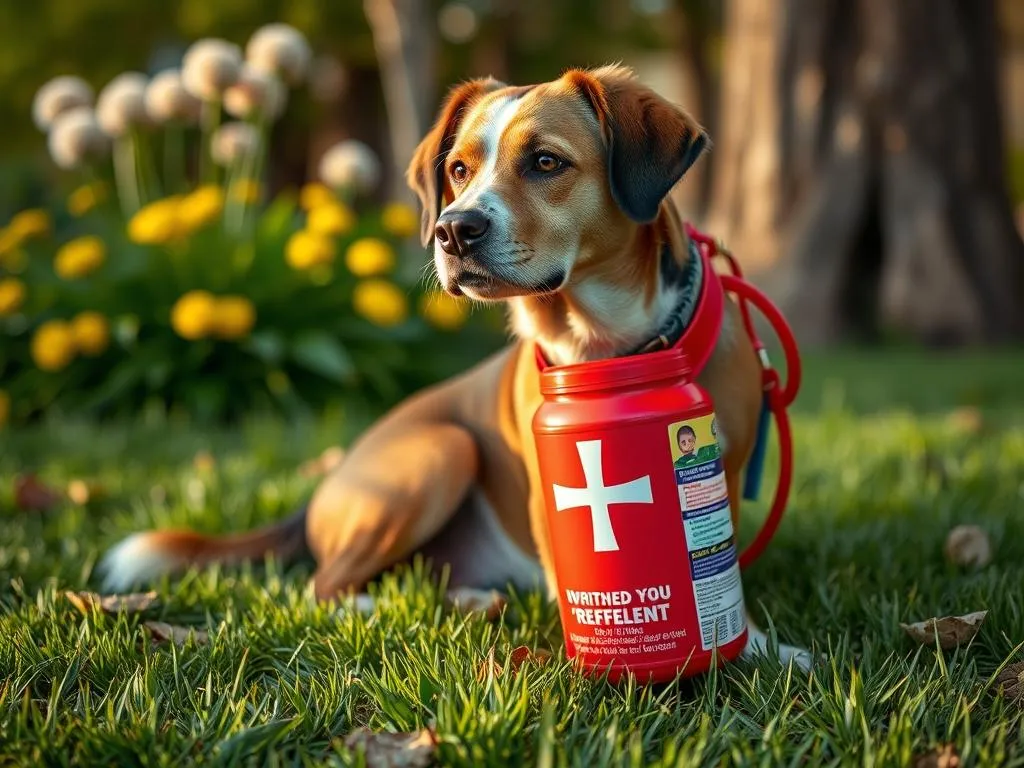
Dogs are beloved companions, but pet ownership can come with its challenges, particularly when it comes to urination. Many pet owners find themselves dealing with unwanted urination indoors or in areas of the yard that are off-limits. Addressing this issue naturally and effectively is crucial, not only for maintaining a clean home but also for ensuring the well-being of our furry friends. This is where homemade dog pee repellents come into play, offering a safe and eco-friendly solution to a common pet problem.
Understanding the root causes of your dog’s behavior, the benefits of using natural ingredients, and a range of DIY recipes can make a significant difference in managing this issue. In this article, we will explore the reasons behind dog urination habits, the advantages of homemade solutions, and provide you with step-by-step guides to create your own repellents.
Understanding Dog Behavior
Why Dogs Pee in Certain Areas
Dogs are creatures of habit, and their urination patterns often reflect their instincts and emotional state. Understanding these behaviors can help you tackle the issue more effectively.
-
Territorial Marking: Many dogs mark their territory as a natural instinct. This behavior is more common in males but can also occur in females, particularly in the presence of other animals.
-
Seeking Comfort or Familiarity: Dogs may choose to urinate in areas that smell like them or their companions. This is often a way of creating a familiar environment, especially in new surroundings.
-
Behavioral Issues or Anxiety: Stress, anxiety, or changes in the environment can lead to inappropriate urination. For instance, a dog might urinate indoors if it feels threatened or insecure.
The Importance of Training
Proper training is fundamental in addressing these behaviors. A well-trained dog is less likely to have accidents in the house or in undesired areas.
-
Overview of Basic House Training: Start with consistent routines. Take your dog out for bathroom breaks frequently, especially after meals and naps. Praise them when they do their business outside.
-
The Role of Reinforcement in Curbing Unwanted Urination: Positive reinforcement is key. Reward your dog with treats and affection when they urinate in the correct spot. This encourages them to repeat the behavior.
Benefits of Homemade Dog Pee Repellents
Eco-Friendly Ingredients
One of the primary advantages of homemade dog pee repellents is the use of natural materials. Unlike commercial sprays that may contain harmful chemicals, homemade solutions are often made from everyday ingredients found in your kitchen.
Cost-Effectiveness
Creating your own dog pee repellents can be significantly cheaper than purchasing commercial alternatives. You can make large batches that last for weeks, maximizing your savings.
Safety for Pets and Humans
Homemade repellents are generally non-toxic, making them a safer choice for homes with children and pets. By using natural ingredients, you can avoid the health risks associated with harsh chemicals.
Common Ingredients for Homemade Dog Pee Repellents
Vinegar
Vinegar is a well-known natural repellent due to its strong smell, which is unpleasant to dogs.
-
How Vinegar Works as a Repellent: The acidity of vinegar disrupts the scent markers that dogs leave behind, making it less appealing for them to return to the area.
-
Recipe Ideas Incorporating Vinegar: Mix equal parts of water and vinegar in a spray bottle. Spray the mixture in areas where your dog tends to urinate.
Citrus Peels
Dogs generally dislike the scent of citrus.
-
Explanation of Why Dogs Dislike Citrus: The strong aroma of citrus fruits, such as oranges and lemons, can deter dogs from urinating in specific areas.
-
Methods to Use Citrus in Repellents: You can create a citrus peel spray by boiling citrus peels in water. Let it cool, strain it, and then transfer it to a spray bottle.
Essential Oils
Certain essential oils are safe for dogs and can be used as effective repellents.
-
Overview of Dog-Safe Essential Oils: Oils like lavender, peppermint, and cedarwood can deter dogs without being harmful.
-
Dilution Ratios and Application Methods: Always dilute essential oils before use. A general ratio is 1-2 drops of essential oil per one cup of water. Spray this mixture in the desired areas.
Other Natural Ingredients
Several other common household items can be effective as dog pee repellents.
-
Coffee Grounds: The strong scent of coffee can deter dogs. Spread used coffee grounds in areas you want to protect.
-
Cayenne Pepper: Dogs generally dislike spicy scents. Mix cayenne pepper with water to create a spray.
Step-by-Step Guide to Making Homemade Dog Pee Repellents
Simple Vinegar Solution
Ingredients:
– 1 cup of water
– 1 cup of vinegar
Instructions:
1. Combine both ingredients in a spray bottle.
2. Shake well before each use.
3. Spray on areas where your dog has urinated.
Citrus Peel Spray
Ingredients:
– Peels from 2-3 citrus fruits (lemons, oranges, etc.)
– 2 cups of water
Instructions:
1. Boil the citrus peels in water for 20 minutes.
2. Let it cool, strain the mixture, and transfer to a spray bottle.
3. Spray on desired areas.
Essential Oil Blend
Ingredients:
– 1 cup of water
– 2 drops of dog-safe essential oil (e.g., lavender)
Instructions:
1. Combine water and essential oil in a spray bottle.
2. Shake well and spray in areas you want to deter your dog from using.
Multi-Ingredient Repellent
Ingredients:
– 1 cup of water
– 1 cup of vinegar
– 1 tablespoon of cayenne pepper
– Peels from 1 citrus fruit
Instructions:
1. Boil the citrus peels in water for 20 minutes, then let cool.
2. Add vinegar and cayenne pepper to the mixture.
3. Strain and transfer to a spray bottle.
4. Shake well before use and spray on targeted areas.
Application Techniques for Effectiveness
Where to Apply Repellents
Identify the areas where your dog tends to urinate. Common spots include corners of rooms, furniture legs, or specific areas in the yard. Apply your chosen repellent directly to these locations.
Frequency of Application
Reapplication is key for sustained effectiveness. Generally, it is recommended to apply your repellent every few days, or after it rains if you’re using it outdoors. Monitor the areas for any signs of urination and adjust as necessary.
Combining Training with Repellent Use
Using repellents should not replace training. Instead, integrate the two approaches by reinforcing good behavior with treats and praise when your dog uses the designated areas. This dual strategy can reinforce positive habits and minimize accidents.
Troubleshooting Common Issues
Dog Resistance to Repellents
If you find that your dog seems unfazed by the repellents, consider adjusting your recipes or application techniques. Some dogs may be more tolerant of certain scents.
Repellent Efficacy
Keep in mind that various factors can affect the efficacy of your homemade repellents, including weather conditions and the time of day. If a repellent seems less effective, reevaluate your application methods and frequency.
Behavioral Adjustments
If your dog continues to urinate in undesired areas despite using repellents and training, it may be time to consult a professional. A veterinarian or a dog trainer can help identify underlying issues that may be contributing to the behavior.
Additional Tips for Pet Owners
Regular Cleaning Practices
Cleaning any soiled areas thoroughly is critical to preventing repeat behaviors. Use enzymatic cleaners designed for pet stains to eliminate odors that may attract your dog back to the same spot.
Monitoring Your Dog’s Health
Changes in urination patterns can sometimes indicate health issues. If you notice sudden changes, consult a veterinarian to rule out any medical concerns.
Creating a Designated Pee Area
Designating a specific outdoor area for bathroom breaks can help. Encourage your dog to use this area by consistently taking them there and rewarding them for using it.
Conclusion
Homemade dog pee repellents offer an effective and eco-friendly solution for managing unwanted urination in your home and yard. By understanding your dog’s behavior, incorporating natural ingredients, and applying these solutions correctly, you can create a harmonious environment for both you and your furry friend. Experiment with different recipes and techniques to find what works best for your situation, and remember that a combination of training and deterrents will yield the best results.
Call to Action
Share your experiences with homemade dog pee repellents and subscribe for more tips and tricks on pet care!









